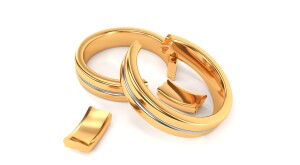Life happened and you haven’t been to the gym regularly in weeks. Now you can barely manage to take a stroll around the block without getting tired. You can’t believe your body got so deconditioned to working out so fast. You’re noticing changes in the mirror too. Things are jiggling a bit more than they did before. Your curves seem to be melting and your muscles feel mushy.
But don’t get discouraged. You don’t have to accept feeling out of shape as a natural part of aging. And it may not take as long as you think for you to get back on track and to love the way you look and feel once again.
Fitness by the numbers
First, you need to define what being “back in shape” means for you.
“Being healthy for you could mean walking up the stairs without feeling breathless when you get to the top,” says Trudie German, a certified personal trainer, who uses her Train with Trudie programs to help perimenopausal and menopausal women love their bodies and be the best versions of themselves. “It could mean you’re able to play with your kids or grandkids without feeling winded.”
Stop clinging to the definition of fitness you held in your 20s.
“I think for most of us, when we were in our 20s, it was more about being skinny, skinny, skinny, because that’s what was being pushed,” German says. “When you’re in your 40s, you’re not thinking about being skinny. You’re thinking, I need to be able to get a good night’s sleep, get up the next morning and be able to function. Your body changes over the years. So, of course, your definition of being healthy is going to change.”
German advises that you avoid using a number on the scale as your measure of success.
“The scale does not measure your sexiness,” she says. Don’t get obsessed with your weight, because it’s rarely a true reflection of health.
For years there has been much discussion in the medical and wellness communities about whether or not you can be “fat and fit.” Can a person be overweight (meaning they have a body mass index – or BMI — of 25 or higher) and still be in shape?
Many health professionals agree that BMI is a measure of health but not the measure of health. There are other numbers we need to focus on more, especially as we age.
In your 20s and 30s you may have been worried about your dress size, but now let’s focus on your blood pressure, cholesterol and A1C (a measure of blood sugar).
Instead of being obsessed with a number on a scale, let’s track the number of steps, servings of fruits and vegetables, and glasses of water you’re getting in each day.
These days you need to look to your doctor – not the scale or even the mirror – to determine how healthy you are. But as you work on improving those lab results and your fruit, veggie and water intake, you’ll soon like what you see in the mirror too and you’ll feel so confident that the number on the scale won’t matter.
Your fitness journey and how to begin again
A goal without a plan is just a wish, so once you’ve settled on your fitness goal, you need a plan for how you’re going to achieve it.
If you’ve been sedentary for a while, take things one step at a time – literally.
“My recommendation, if you’re new to fitness or you haven’t worked out in at least six months, is start with something as simple as walking,” German says. “Walking is so underrated, but yet, it is so effective.”
German suggests starting with just a 10-minute walk every other day. At the end of the week, you’ll feel a sense of accomplishment and, most likely, feel confident that you can do more. The next week you can add an extra five or 10 minutes or an extra day or both. Commit to walking three to four times a week for four weeks.
“Once you’ve mastered that, then you can move on to something else like weights,” German says.
Eventually you can work up to the 150 minutes of moderate-intensity physical activity and two days of muscle strengthening activity recommended by the U.S Department of Health and Human Services.
As you build your workout regimen, be sure that you’re considering what else you have on your plate.
“We’re at the stage where a lot of us are kind of parenting two generations,” German says. “We’re parenting our elderly parents, then we’re also parenting our children. And some after 40 also have grandchildren they’re helping to raise along with possible career changes or growth in careers.”
Don’t underestimate what you have going on, and don’t overestimate how much time you can devote to fitness.
Write it all down, German recommends. Look at your responsibilities and then plan and schedule your workouts accordingly.
When will you see results?
While you won’t see results overnight, if you’re being consistent you may notice changes faster than you think.
German says you can expect to feel a difference in a week or two if you’re moving your body consistently, and you should see a difference in four to six weeks.
So in just a couple of weeks you may have more energy and notice you’ve got a little spring in your step. You might feel lighter even if the scale hasn’t changed.
After a month or so, you’ll start to see a difference. Your clothes may fit better as your muscle tone begins to reemerge.
“Our bodies adapt pretty easily,” German says. And yes, she believes our bodies adapt easily even over 40. It’s our minds that struggle.
“It’s us having to get into the mind frame of actually doing it, and telling ourselves that it’s challenging but we can do it,” she says. We also must stop comparing our results to our 20-something-year-old bodies.
Stop saying, “When I was in my 20s, I could just snap my fingers and be back in shape.”
“First of all, girlfriend, life was different in your 20s. So, let’s start there,” German says. You had fewer responsibilities, and your hormones weren’t going haywire.
German says that now, “You’ve got to snap, jump and snap a little more.”











